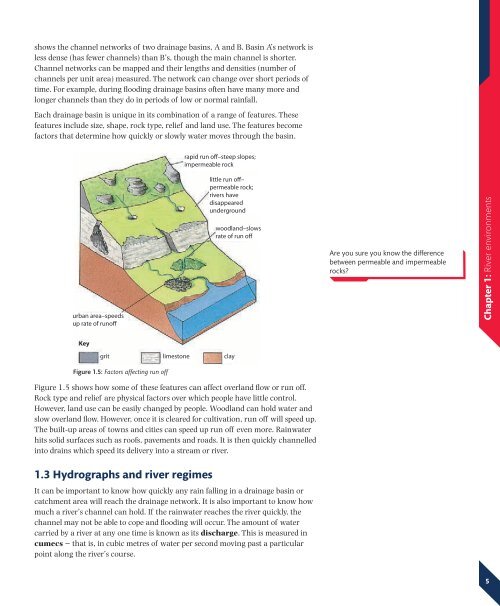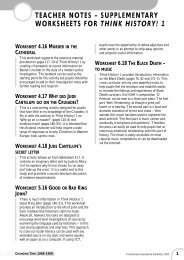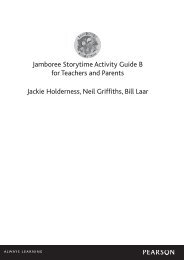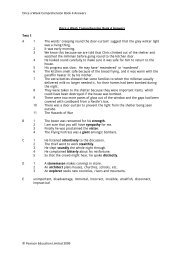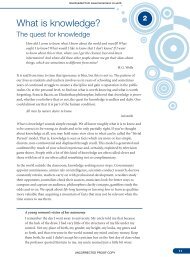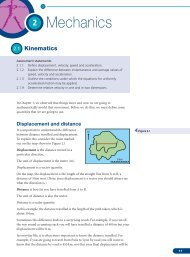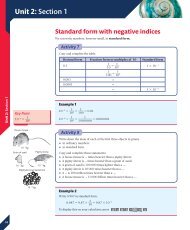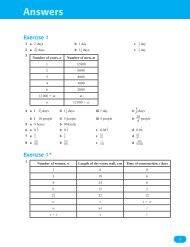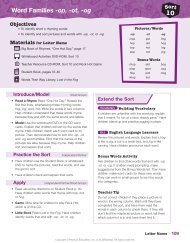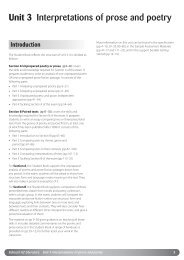Edexcel IGCSE Geography Chapter 1 - Pearson Schools
Edexcel IGCSE Geography Chapter 1 - Pearson Schools
Edexcel IGCSE Geography Chapter 1 - Pearson Schools
You also want an ePaper? Increase the reach of your titles
YUMPU automatically turns print PDFs into web optimized ePapers that Google loves.
shows the channel networks of two drainage basins, A and B. Basin A’s network isless dense (has fewer channels) than B’s, though the main channel is shorter.Channel networks can be mapped and their lengths and densities (number ofchannels per unit area) measured. The network can change over short periods oftime. For example, during flooding drainage basins often have many more andlonger channels than they do in periods of low or normal rainfall.Each drainage basin is unique in its combination of a range of features. Thesefeatures include size, shape, rock type, relief and land use. The features becomefactors that determine how quickly or slowly water moves through the basin.rapid run off–steep slopes;impermeable rockurban area–speedsup rate of runofflittle run off–permeable rock;rivers havedisappearedundergroundwoodland–slowsrate of run offAre you sure you know the differencebetween permeable and impermeablerocks?<strong>Chapter</strong> 1: River environmentsKeygritlimestoneclayFigure 1.5: Factors affecting run offFigure 1.5 shows how some of these features can affect overland flow or run off.Rock type and relief are physical factors over which people have little control.However, land use can be easily changed by people. Woodland can hold water andslow overland flow. However, once it is cleared for cultivation, run off will speed up.The built-up areas of towns and cities can speed up run off even more. Rainwaterhits solid surfaces such as roofs, pavements and roads. It is then quickly channelledinto drains which speed its delivery into a stream or river.1.3 Hydrographs and river regimesIt can be important to know how quickly any rain falling in a drainage basin orcatchment area will reach the drainage network. It is also important to know howmuch a river’s channel can hold. If the rainwater reaches the river quickly, thechannel may not be able to cope and flooding will occur. The amount of watercarried by a river at any one time is known as its discharge. This is measured incumecs − that is, in cubic metres of water per second moving past a particularpoint along the river’s course.5


